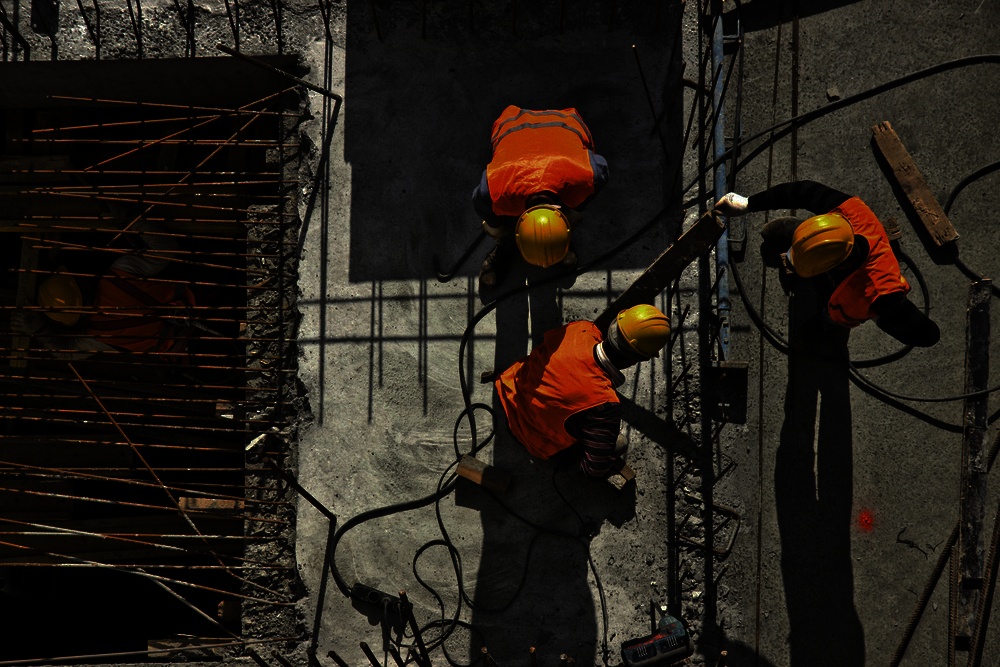2018 was rife with innovation in the construction industry, with the advance of artificial intelligence, breakthroughs in construction robotics, and an increasing importance placed on sustainable architecture and accessible design.
As we move into 2019, these innovations are set to continue: the revolution in technology and robotics is paving the way for more energy efficient, affordable, and streamlined building and construction projects in the future.
Here, we’ve rounded up the main building and construction trends to keep an eye on in the New Year – and what they mean for you.
1. Construction robotics will continue to revolutionise the way we work in 2019.
In 2018, the construction robotics industry made significant progress: the first 3D printed bridge was constructed in the Netherlands, while a new bricklaying robot, the Semi-Automated Mason (SAM), has the potential to boost productivity for construction workers by laying bricks almost 5 times faster than humans.
In 2019, these developments show no signs of slowing down: new robotic welders, demolition robots, and rebar-tying robots show promise and potential for rapid development in the New Year.
Instead of reducing jobs, these developments are paving the way for more efficient project management, improved working conditions and compliance with Work Health & Safety, and higher standards of construction quality.
2. Legislation changes will lead to more focus on sustainable design and construction.
With the proposed changes for NCC in 2019, and increased extreme weather conditions as a result of global warming, it’s no surprise that sustainability is yet another hot topic for 2019. If the proposed review of the NCC is passed, project managers will need to ensure that current and future projects are compliant with the new energy efficiency regulations, particularly for commercial buildings.
3. Wearable tech will make the workplace safer.
Apple and Samsung aren’t the only ones making waves in the wearables sector. Wearable technology is also making its way to building and construction sites, with pilot projects are changing the way we work, such as Sole Power’s SmartBoots.
These work boots are embedded with GPS and motion sensors, as well as lighting, RFID, and WiFi, to help project managers track workflow in real-time and simplify compliance and monitoring, while also improving the situational awareness of construction workers.
While the technology is in its fledgeling stages, any breakthroughs will transform construction projects through improving safety conditions for construction workers, and making it easier for project managers to track progress on-site.
4. The Internet of Things (IoT) will transform construction management software.
The IoT and cloud technology is changing the way construction teams communicate and collaborate. Building sites will be increasingly well-connected in 2019: cloud apps can help businesses quickly release BIM data to workshops or suppliers, helping to simplify and streamline the communication and workflow process.
However, the IoT also has the potential to shift the way that we manage the entire lifecycle of buildings: IoT sensors can be used to monitor energy expenditure, water use and waste, central building monitoring tools, and more. In 2019, project managers will need to consider how to integrate IoT sensors into the design of a building, in order to support it before, during, and after a project is complete.
5. Improved workplace conditions and the mental health of construction workers should continue to be a priority.
The industry experienced a boom of workers in 2018, with the number of full and part-time workers reaching the second highest level on record in May . This, coupled with an increased psychological distress in remote construction and mining workers, could have negative ramifications on projects and businesses if managed incorrectly, leading to increased competition and increased risk of mental health issues down the line.
In the New Year, project managers and business owners should focus on creating positive work environments, which put the health and safety of construction workers front and centre.
6. Accessibility and aesthetics will go hand-in-hand.
Australian design standards and regulations are complicated to navigate, and often functionality and compliance trump design and aesthetic appeal. However, new and innovative designs are paving the way for a future where architects and project teams collaborate to create contemporary designs that are innovative, while also meeting Australian Standards.
From bold staircases that incorporate contemporary design with tactile indicator studs, handrails and stair treads, to height adjustable counters that cater to wheelchair access, there have been plenty of designs in recent years that combine function and style. In 2019, architects will continue to bring new ideas to the table that meet AS standards and pack a visual punch – keep an eye out for inspiration for your next projects.
7. Innovative construction materials will revolutionise the industry.
Due to an increased demand for sustainable materials, leading researchers and institutions are exploring new technologies which are more energy efficient, or which leverage recycled materials or waste.
In 2018, there were a host of exciting developments in construction material, including the development of translucent wood for windows and solar panels, energy efficient bricks infused with cigarette waste, and light-generating cement.
It’s important to keep abreast of new construction technology in 2019: as these projects gain maturity, as they have the potential to improve construction quality and reduce costs in the future.
Next Steps
The construction industry is poised for revolution, and 2019 will be another exciting year filled with innovation. With so many opportunities on the horizon, it’s crucial to prepare your projects for success in 2019.
To find out more about Latham products, please visit www.latham-australia.com. To talk to a Latham product expert, call 1300 LATHAM (528 426) or email sales@latham-australia.com.


